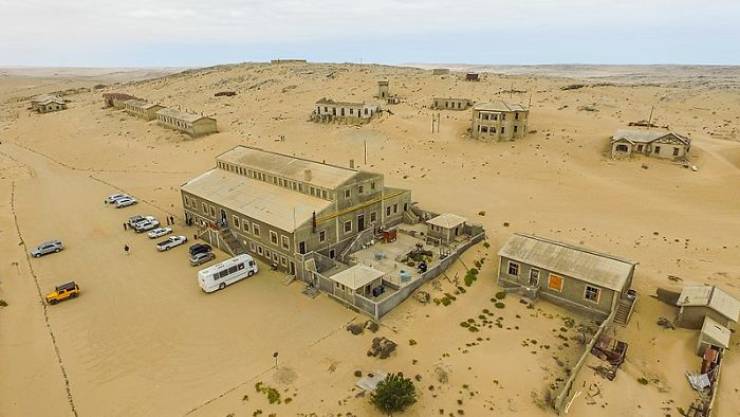Kolmanskop, Namibia

In 1908, in southern Namibia, 10 kilometers inland from the port town of Lüderitz, a worker found a diamond and showed it to his supervisor, the German railway inspector, August Stauch. This led to German miners moving in and settling in the area to mine diamonds. Not long after, the German Empire declared a large area as a "Sperrgebiet", starting to exploit the diamond field. People, roused by the enormous wealth of the first diamond miners, flocked to the area and built a village in the style of a German town with amenities such as a hospital, ballroom, power station, school, skittle-alley, theatre and sports-hall, casino, ice factory and the first X-ray station in the southern hemisphere. The diamond-field slowly started to deplete soon after the Second World War leading to a decrease in the population of Kolmanskop. It was completely abandoned in 1956. Nowadays, the desert has partly reclaimed the city and tourists visiting the buildings walk knee-deep in sand. It is a popular location for tourists, especially photographers, seeking to experience or capture settings of the desert sands reclaiming the once-thriving town. Though, since Kolmanskop is within the restricted area (Sperrgebiet), tourists need a permit to enter the town.